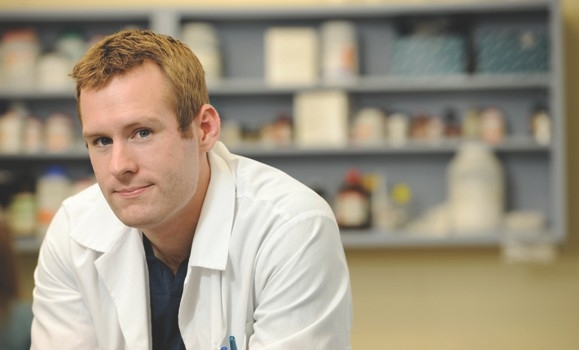News
» Go to news mainDalhousie investigators honored for top publications in cancer research

Drs. Drew Leidal, Microbiology & Immunology, and Kyle Phipps, Biochemistry & Molecular Biology, recently published two of the top six cancer research papers in Canada. Both were awarded the Canadian Institute of Health Research’s Institute for Cancer Research (ICR) Publication Prize for demonstrating the cellular conditions that allow cancer to arise, and the factors that influence its spread.
How a viral infection undermines anti-cancer defenses
Under the mentorship of Dr. Craig McCormick, department of Microbiology and Immunology at Dalhousie University, Dr. Drew Leidal has been investigating how a human herpesvirus promotes the development of cancer. Leidal’s work revealed that a virus, called Kaposi’s sarcoma-associated herpesvirus (KSHV), predisposes to the development of cancer by undermining our body’s inherent anti-cancer defenses.
“Viruses are excellent teachers,” said Leidal. “By studying cancer-causing viruses we not only learn about malignancies such as Kaposi’s sarcoma, but also about cellular pathways that are frequently disrupted in cancers unlinked to viruses.”
Leidal is interested in how KSHV can bypass oncogene-induced senescence, one of the body’s best cancer defenses. Its function is to detect the danger signals associated with cell proliferation, and put the brakes on uncontrolled cancer growth. A very visible example of senescence at work in our bodies is the formation of moles on our skin. Most moles are actually the result of a successful defense against skin cancer, and are full of senescent cells that are incapable of dividing.
Drs. McCormick and Leidal suggest that while these senescent cells are good, they are not perfect. As Leidal’s paper demonstrates, KSHV has found a way to bypass the senescence barrier through a clever, two-component system: a viral protein called v-cyclin drives cell proliferation, while a second viral protein, called v-FLIP, disables the senescence program.
“Remarkably, we have found that rapidly proliferating KSHV infected cells fail to undergo oncogene-induced senescence, and are prone to developing into cancers,” said McCormick.
In his paper, Leidal identifies senescence as a vital barrier to KSHV tumor formation. His research states that reinforcing these barriers may have therapeutic benefit in treating KSHV and other human cancers.
Key protein facilitates cancer growth

PhD and second year medical student, Dr. Kyle Phipps, was also honored with the Canadian Institute of Health Research’s ICR Publication Prize. Phipps has found that blood cells called macrophages carry a protein called S100A10, allowing these cells to travel into tumors and facilitate cancer growth.
“Research shows that macrophages migrate from the blood stream to the tumor site by utilizing S100A10 to activate plasmin, a protease,” said Phipps. “Proteases digest connective tissue and other barriers, in this case allowing the macrophage to gain access to the tumor site.”
Dr. Waisman, supervisor to Phipps, explains further. He says that S100A10 acts like a pair of scissors on the outside of macrophages, empowering the macrophages with the ability to chew their way through tissues and enter the tumor site. Once in the tumor, macrophages release substances that stimulate cancer cell growth.
“We used to think that the only cells that mattered in a tumor were the cancer cells,” said Waisman. “Now we see that other cells must collaborate with cancer cells to drive tumor growth and permit an evolution of the cancer cells into metastatic cells.”
Phipps and Waisman are working on identifying pharmaceutical agents that can block the action of S100A10, thereby preventing the movement of macrophages into tumors. Chemically blocking macrophages, or the S100A10 protein they carry, could slow – even stop – cancer growth.
Recent News
- Dal researchers unite to help tackle high epilepsy rates in remote Zambia
- Second year medical student catches attention of top morning show
- Celebrating 10 Years of Dalhousie’s Medical Sciences program
- Global impact: Three Dal faculty recognized in 2024 Highly Cited Researchers list
- Student offers simple skills on how to quickly improve care for people with sight loss
- Three Dal researchers nominated for this year's Public Impact Award
- Dal student triumphs at Falling Walls in Berlin
- One in five kids endure chronic pain. A new pain standard will soothe it
